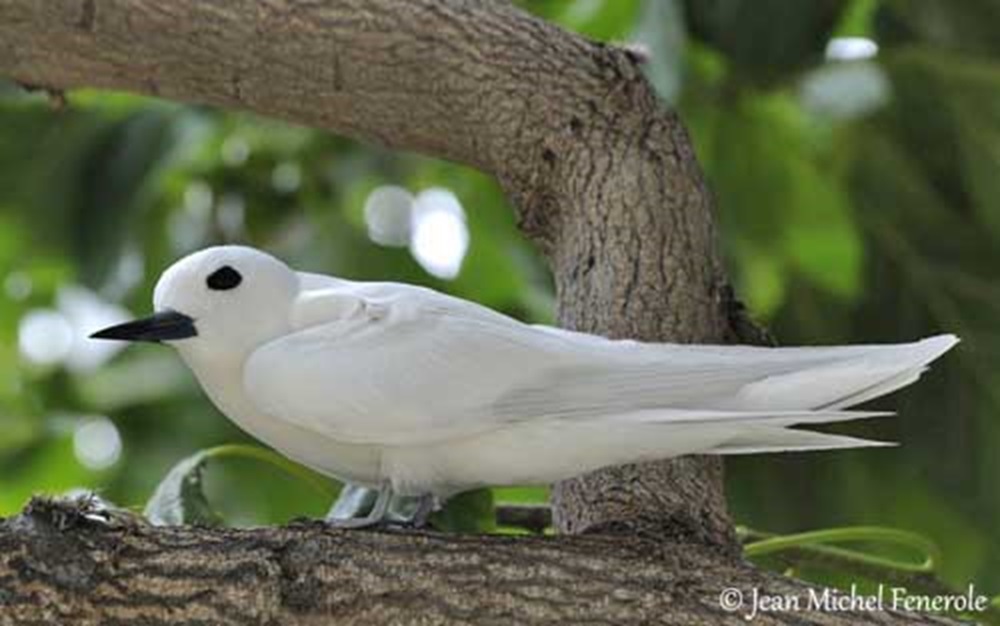Welcome to the Pet Breed Hub Today, we’re diving into the world of the White Tern, a bird that’s as intriguing as it is elegant. Let’s embark on this feathered journey together!
Key Points
- Scientific Name: Gygis alba
- Order: Charadriiformes
- Family: Laridae
- Genus: Gygis
- Species: alba
- Class: Aves (Birds)
What Makes the White Tern So Stunning?

Shimmering White Feathers: Imagine a bird covered in snow-white feathers. That’s our White Tern! Their feathers are so bright and pure, they almost sparkle in the sun.
Mysterious Black Eyes: These birds have a secret weapon: their enchanting black eyes, surrounded by a magical black ring. It’s like they’re wearing natural eyeliner!
Slim and Sleek: Picture a gymnast—that’s how the White Tern looks. They have a slender body, which makes them super agile in the air. It’s like watching a dancer fly through the sky.
Did You Know?
No Two Are Exactly Alike: Each white tern has slight differences in their feathers. Some might have a tiny grey spot or two!
Sunshine Lovers: Their white feathers aren’t just pretty; they help reflect the sun. This keeps them cool while soaring over warm oceans.
Habitat and Lifestyle
Where Does the White Tern Call Home?
Ocean Adventurers: White Terns are true ocean lovers. They live near the sea, especially around tropical islands. Imagine a bird that calls the beautiful, blue ocean its backyard!
Global Travelers: These birds are globe-trotters! They can be found in many places around the world, like the Pacific and Indian Oceans. Some even visit coastal areas, bringing a bit of ocean life to the shores.
What’s a Day in the Life of a White Tern Like?
Solo Flyers: White Terns often fly alone, gracefully gliding over the waves. They’re like the lone rangers of the sky, exploring the vast ocean on their own.
Sky Dancers: Watching a White Tern in flight is like seeing a dance in the air. They’re so agile and graceful, making flying look effortless.
Cool Facts!
Island Hoppers: Some White Terns like to move between islands, searching for the best spots to find food and relax.
Weather Watchers: These birds are smart! They know how to find the best weather and will move around to stay comfortable.
Why It’s Awesome
Knowing where the White Tern lives and how it behaves helps us understand and protect these amazing birds. Each aspect of their habitat and lifestyle is a piece of the puzzle in the grand picture of our planet’s wildlife.
Diet Secrets
What’s On the Menu for a White Tern?
Fish Fanatics: Imagine a bird that’s a pro fisher! White terns love snacking on small fish. They catch them with precision, making it look so easy.
Squid Hunters: Apart from fish, they have a taste for squid. They’re like the underwater ninjas of the bird world, swiftly catching these slippery creatures.
How Do They Catch Their Food?
Aerial Acrobats: White terns don’t just catch their food; they put on a show! They swoop and dive through the air, snatching up fish and squid right from the water.
Ocean Skimmers: Sometimes, they’ll gracefully skim the surface of the ocean, snagging a meal with their sharp beaks.
Breeding and Nesting Habits
The Unique Nesting of the White Tern
Bare Branch Nursery: White terns are unconventional when it comes to nests. They don’t build one! Instead, they lay their eggs right on a bare tree branch. It’s like living on a tightrope!
Egg Balancing Act: Their egg is carefully balanced on the branch. It’s a risky strategy, but these birds are expert balancers.
Raising the Tiny Terns
Teamwork Makes the Dream Work: Both mom and dad White Tern take turns looking after the egg and then the chick. They’re super parents in the bird world!
First Flight: After a few months, the chick is ready for its first big adventure—flying! It’s a big moment for both the chick and its parents.
Fun Facts!
Egg-citing Colors: Their eggs aren’t just plain white; they can have speckles too.
Nest-less Wonders: White terns are one of the few birds that don’t use a nest. Nature is full of surprises!
FAQs
1: What color are White Terns?
White Terns are primarily snow-white, with some individuals showing slight grey tones.
2: Where do White Terns live?
They inhabit tropical and subtropical oceans, often near islands and coastal regions.
3: What do White Terns eat?
Their diet consists mostly of small fish and squid, which they catch from the ocean surface.
4: How do White Terns nest?
Uniquely, they lay their eggs directly on tree branches or cliff ledges without building a nest.
5: How long do White Tern chicks stay with their parents?
Chicks stay with their parents for several months until they are strong enough to fly and fend for themselves.
6: Are White Terns endangered?
Currently, White Terns are not classified as endangered, but they face threats from habitat loss and climate change.
7: Do White Terns migrate?
Some populations of White Terns are migratory, while others remain in the same area year-round.
8: Can White Terns fly long distances?
Yes, they are capable of flying long distances, especially during migrations.
9: How do White Terns catch their food?
They catch their food by skimming the ocean surface or diving from the air to snatch prey from the water.
10: How can we help protect White Terns?
We can help by supporting conservation efforts, reducing pollution, and protecting their natural habitats.
Conclusion
The White Tern is more than just a pretty bird; it’s a symbol of the ocean’s beauty and resilience. By understanding and protecting these feathered wonders, we ensure their skies remain filled with grace and elegance.
References and External Links
White Tern Conservation: For insights into conservation efforts and how you can contribute, visit the Audubon Society’s website.
Marine Life Protection: Learn more about protecting marine life and the habitats of ocean-dwelling birds like the White Tern at the Ocean Conservancy’s website.
Interactive Learning: For interactive and educational games related to birds and wildlife, explore the resources available at PBS Kids.
Global Bird Database: For comprehensive data on White Terns, including distribution and behavior, refer to the eBird website maintained by the Cornell Lab of Ornithology.
Climate Change and Birds: To understand the impact of climate change on birds like the White Tern, visit the World Wildlife Fund (WWF) website.
DIY Bird Projects: For fun DIY projects related to birds suitable for kids and families, check out The Spruce Crafts.

